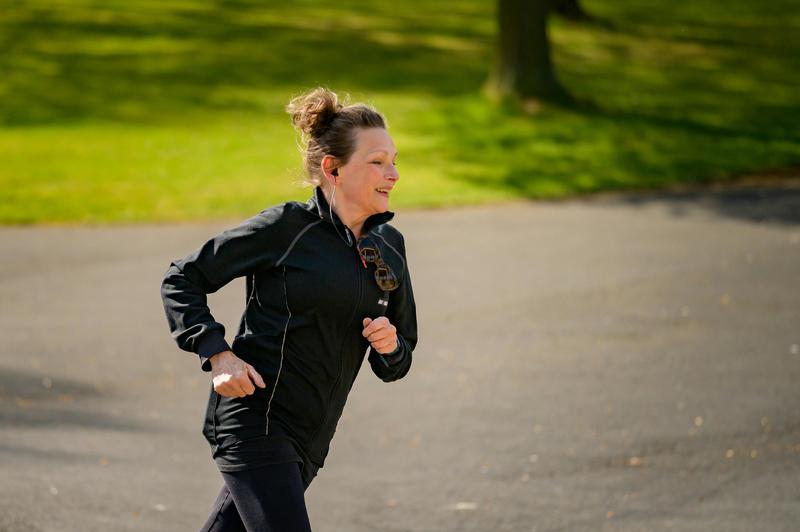You Know What’s Healthy…So Why Can’t You Follow Through?

You know what’s interesting? Most of us already know what’s “healthy.” We know moving our body is good. We know eating whole foods is better than eating junk. But here’s the thing—knowing doesn’t mean believing. Because if you believed it deeply, you’d already be doing it every day. Right?
Today we’re going to explore something people rarely look at when it comes to health. It’s not about the latest diet. It’s not about whether you lift weights or do cardio. It’s about the beliefs that run under the surface—beliefs that shape your emotional state, your choices, and ultimately the condition of your body.
This is about training your inner world so your outer results finally line up.
The Misalignment Between Thought and Belief
Here’s the first point most people miss: thoughts and beliefs aren’t the same thing.
Your *thought* says, “I should skip the donut.” Your *belief*—trained long ago—says, “Sugar makes me feel better.”
And in that moment, the belief wins. Every time.
Because beliefs aren’t just ideas. They’re emotional patterns wired into your nervous system. They were installed early on—through family habits, cultural norms, or what was modeled around you.
I’ve seen this play out countless times. Someone will say, “I know working out gives me energy,” but then when the alarm goes off at 6 a.m., they hit snooze. The thought was there, but the belief wasn’t aligned.
Or another person might say, “I know soda is bad for me,” but when stress hits, their hand automatically reaches for the can. Not because they don’t know better, but because their nervous system is trained to expect relief from that familiar pattern.
So if you keep telling yourself new thoughts, but your belief hasn’t shifted, your nervous system will fight you. That’s why diets don’t stick. That’s why motivation fades.
This is the state you’re training, over and over—whether you see it or not.
Where Beliefs Around the Body Come From
Most of us didn’t consciously choose our beliefs about food or fitness.
Think about it. Maybe growing up, comfort always came with dessert. Maybe meals were about finishing your plate—no matter if you were hungry or not. Maybe skipping breakfast was treated like you were doing something “wrong.”
These weren’t neutral experiences. They carried emotional weight. And your nervous system recorded them.
I’ve worked with people who grew up in homes where every celebration was tied to food—pizza after winning a game, cake for birthdays, ice cream after hard days. For them, food equals comfort, food equals reward, food equals connection. Later in life, no matter how many diet books they read, that underlying association is still running.
And here’s the reality—your nervous system doesn’t care if the old pattern is healthy or destructive. It only cares that it’s familiar.
So when you try to change, your body flashes a warning signal: “Something’s wrong.” That’s why the first week of any diet or exercise program feels so uncomfortable—it’s not just the food or the gym. It’s your inner wiring resisting the shift.
And that’s where most people quit. They mistake discomfort for failure. But really, it’s just the nervous system doing its job—protecting the old pattern.
The Nervous System Protects the Status Quo
Let’s make this clear. Your nervous system’s job isn’t to make you healthy. It’s to keep things the same.
Even if “the same” means low energy, weight gain, or poor habits.
That’s why you can feel like you’re fighting yourself. One part of you says, “I want to feel amazing.” Another part says, “Stay exactly where we are.”
And that tug-of-war drains energy. It creates guilt. It makes people think they’re weak or lazy.
But here’s the truth: you’re not broken. You’ve just been **training a state of conflict**.
I’ve seen this in people who bounce from one program to the next. They start strong, but when the nervous system pushes back, they label themselves as failures. The pattern isn’t failure—it’s resistance. And resistance just means the old wiring is still stronger than the new one.
When you see it that way, the work becomes less about forcing discipline and more about retraining the system itself.
The Core Principles of Lasting Health
Strip away all the fad diets and complex plans, and there are really only a few principles that matter:
- We only get one body.
- What we put into it matters.
- Movement is essential.
Everything else—calorie counts, macros, meal timing—sits on top of those basics.
But here’s the catch: if your beliefs don’t line up with these realities, you’ll always feel like you’re pushing uphill.
For example: if the belief is “I love moving my body daily,” then exercise isn’t a chore—it’s something you look forward to. If the belief is “Fuel determines performance,” then eating well isn’t deprivation—it’s how you answer to feeling amazing.
I once worked with someone who used to dread workouts. Their belief was: “Exercise is punishment.” Every time they thought about going to the gym, they felt guilt or shame. Once we trained a new belief—“Movement is how I feel alive”—everything shifted. They started going for walks, then lifting weights, not because they had to, but because they wanted to.
This is what lasting change looks like. Not just new knowledge, but new beliefs trained into your nervous system.
How Beliefs Shape Action
Think of it like this:
- Perception: You see the gym bag in the corner.
- Emotion: The belief kicks in—“Working out is hard. I’m tired.”
- Thought: “Maybe I’ll go tomorrow.”
- Action: The gym bag stays in the corner.
But shift the emotional state, and the whole chain flips:
- Perception: You see the gym bag.
- Emotion: “Moving my body feels great.”
- Thought: “This will set my day up right.”
- Action: You grab the bag and go.
Same perception. Different belief. Completely different outcome.
That’s the power of training your emotional states—because emotion drives thought, and thought drives action.
And this isn’t just about fitness. The same chain runs when you decide what to eat, whether you stay up late scrolling, or whether you cook a meal instead of ordering takeout.
One client I worked with realized every time they saw a bag of chips, their state was: “I deserve this. It’s my break.” That belief led to a thought—“I’ll just have one handful”—and then an action that turned into finishing the bag. Once they trained a new belief—“My body deserves the best fuel”—their thought changed. Same chips. Different emotional state. Different action.

Training New Beliefs
So how do you actually change this? Not by “thinking positive.” Not by willpower.
You retrain your nervous system.
That means practicing a new state until it sticks. Saying, “I prioritize my body because everything depends on it,” while simultaneously *feeling* the energy and alignment of that state. Repeating it until the nervous system recognizes it as the new normal.
At first, the old pattern will fight back. That’s normal. But repetition rewires the system.
And here’s what’s powerful: once the nervous system accepts a new belief, the old one doesn’t control you anymore. You don’t have to “convince” yourself. You don’t have to battle with willpower. You just feel pulled into the new choice, naturally.
I’ve seen people go from hating vegetables to craving them. Not because their taste buds changed overnight, but because the belief behind the food shifted. The state they were training—“I choose what makes me feel alive”—changed the whole experience.
Over time, you don’t just think differently—you *feel* differently. And from there, new actions follow naturally.
The Reflection That Shifts Everything
Here’s the reflection I’d leave you with:
**What emotional state are you practicing—over and over—without even realizing it?**
Because that state is what’s driving your health right now. Not the diet. Not the workout plan. The state.
If you can see it, you can train something new.
If you’re ready to stop managing symptoms and start training a steady, resilient inner state, I’ve built a system for that. It integrates perception, emotion, and nervous system—so you don’t just understand your patterns…you actually shift them.
I also share practices weekly on Instagram—@mikewangcoaching. And if you want more depth, you can join the newsletter here.
